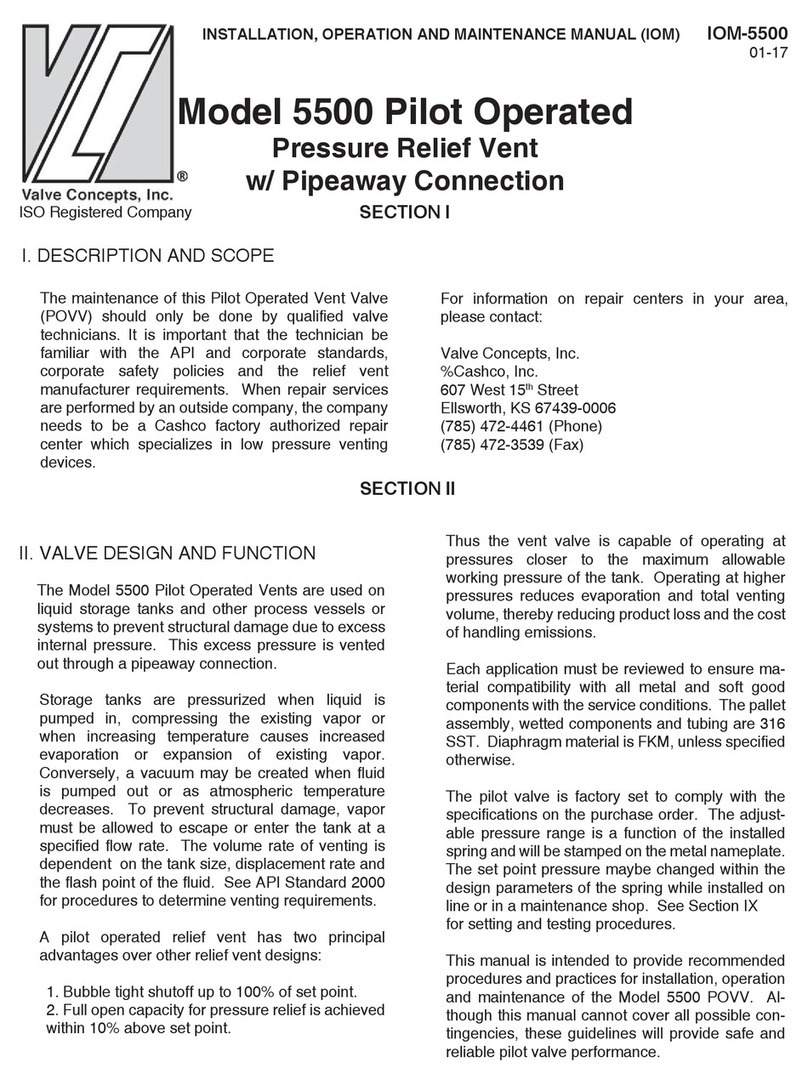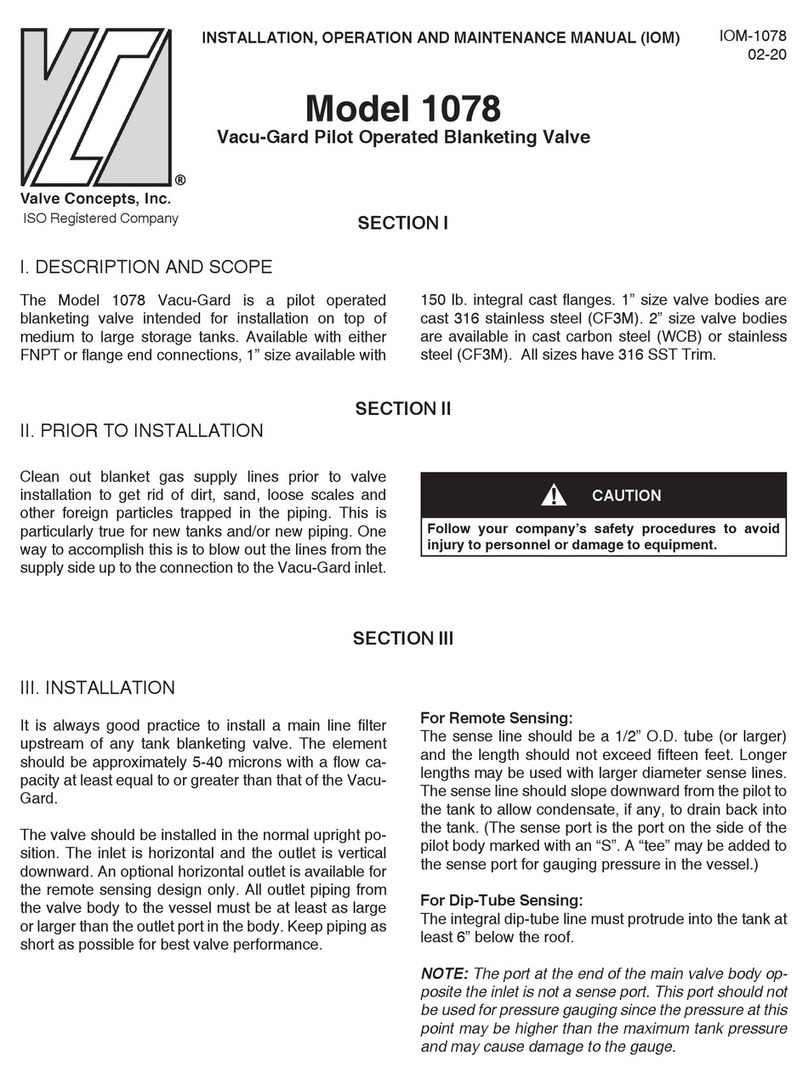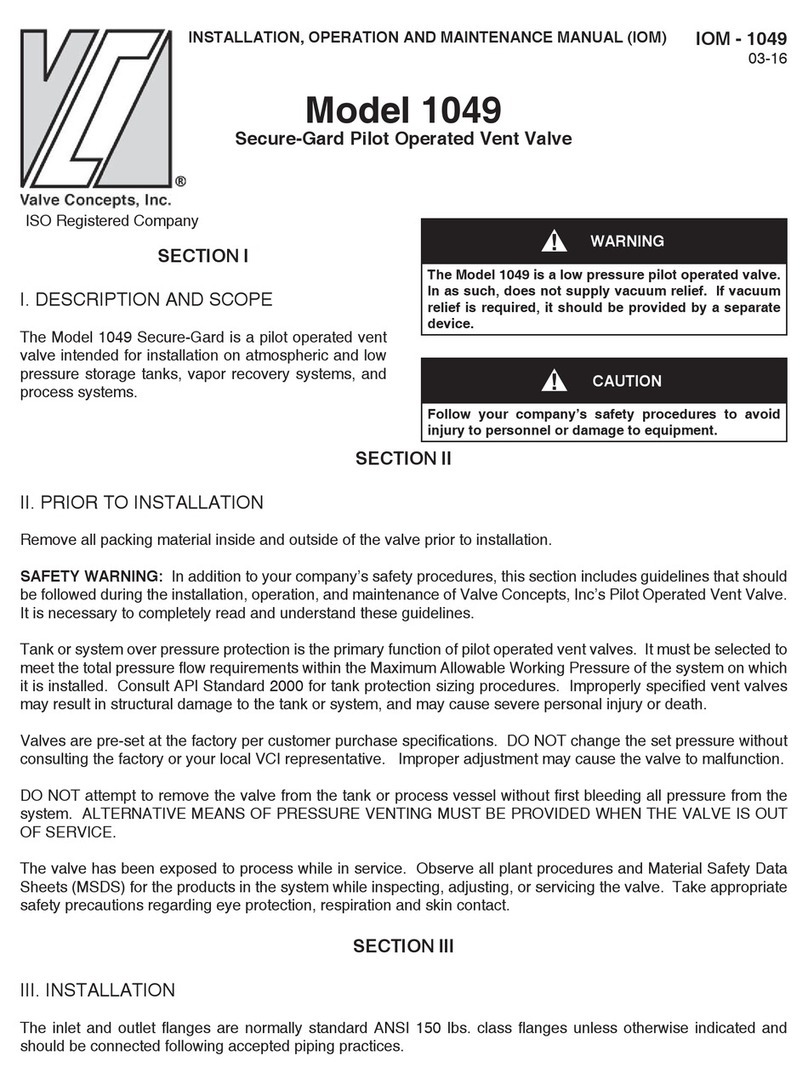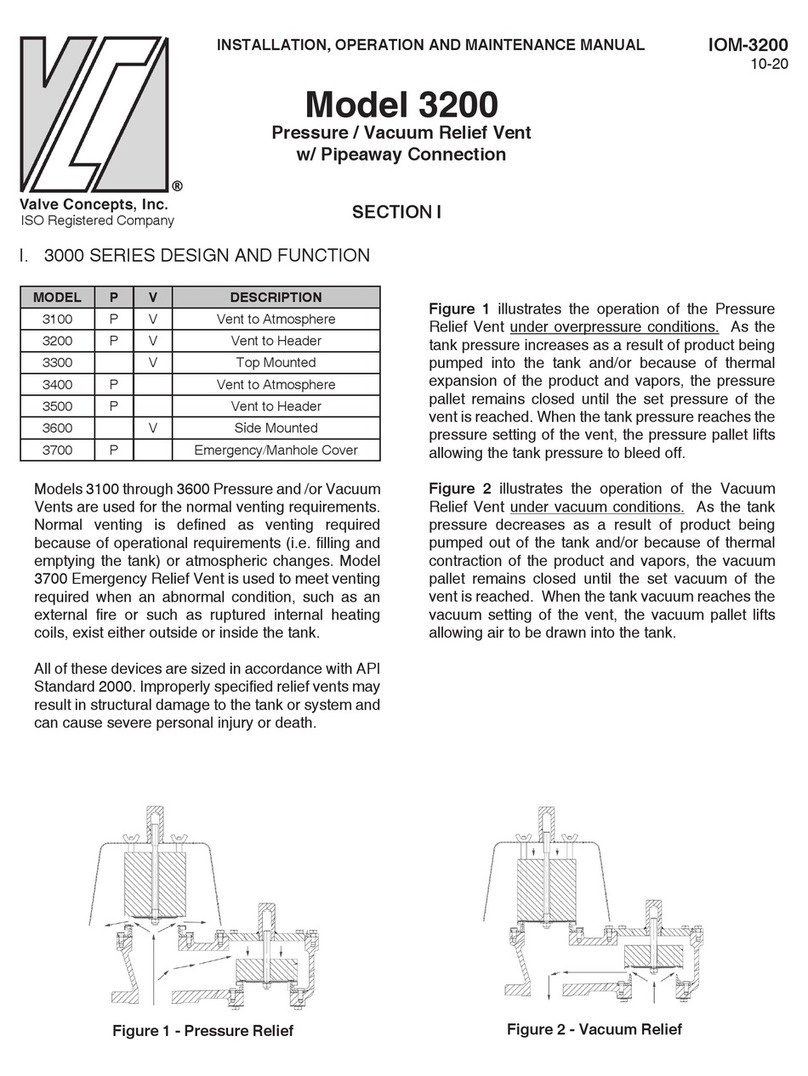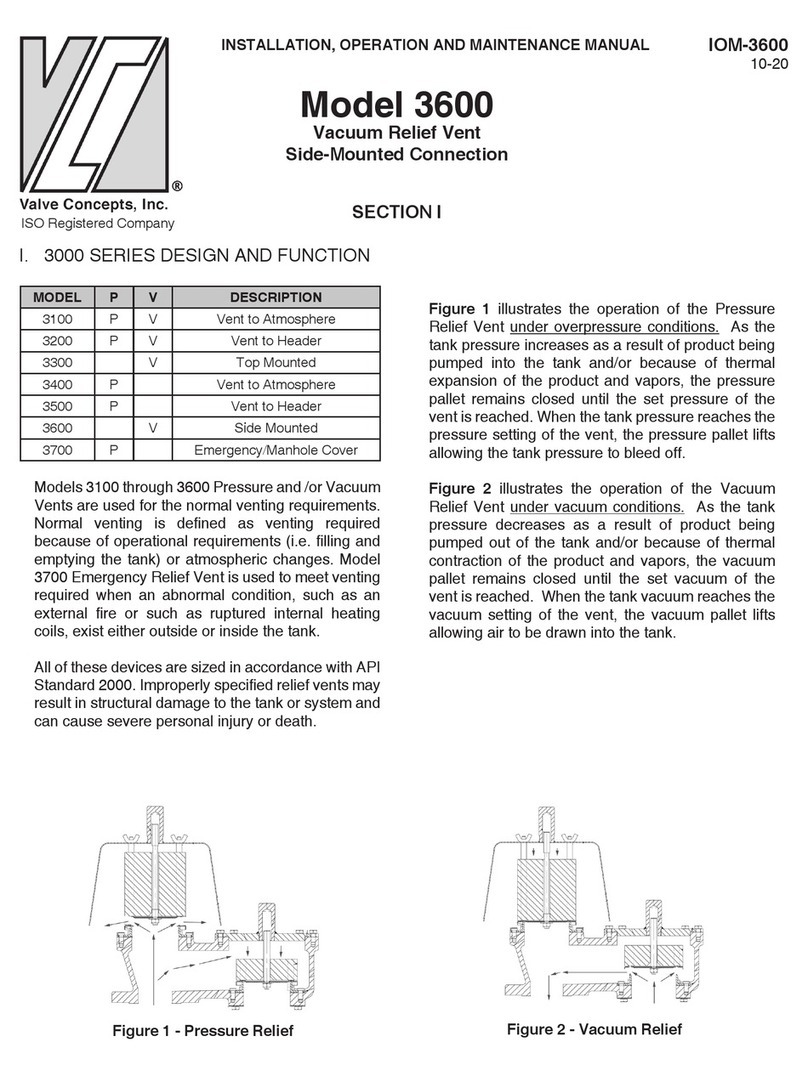
7
IOM-5400
NOTE: Support plate (116) will also slide off
pressure stem (103). (Continue on to
step i. unless changing gasket (113)).
To Replace Adapter Gasket: steps (e. - h).
e. Lay the (AA) and weatherhood assy on
flat surface, bottom edge of weatherhood
resting on flat surface. Grasp the top of
the support plate weldment and lift up to
remove.
f. Paint or embed a set of match marks
between weatherhood (111) and lower
actuator case assy (114).
g. Flip the weatherhood over so lower
case (114) is resting on the flat surface.
Loosen and remove adapter bolts (115).
Set weatherhood (111) to the side and
remove weatherhood plate (112). Remove
and replace actuator case gasket (113).
h. Align bolt holes in weatherhood plate
(112) and weatherhood (111) with lower
actuator case assy (114) and install
adapter bolts (115). Tighten securely.
i. Remove wire screen (110) from seat
ring. Lift pressure stem/pallet (103/105)
assembly straight up off the seat ring
(101). Inspect seating surface of seat
ring and pallet diaphragm (106) Inspect
seating surface of seat ring (101).
j. Carefully secure stem (103) in a vise
with lock nut (108) up. Remove nut from
pressure stem.
k. Remove diaphragm retainer plate
(107), diaphragm (106), pallet (105) and
stiffener plate (104) from stem.
l. Clean and inspect parts for wear,
replace if worn. Re-install stiffener plate
(104) and pallet (105) on stem. NOTE:
Apply small amount of TFE paste around
the center opening (top surface) of the
pallet.
m. Place a new diaphragm (107) on the
pallet (105). NOTE: Apply small amount of
TFE paste around the center opening (top
surface) of the diaphragm (106).
n. Install the diaphragm retainer plate
(107) and lock nut (108), secure nut tight.
o. Remove pallet (105) assembly from
vise.
To Remove Seat Ring:
NOTE: If vent has integral or pressed in
seat rings, contact the factory.
Paint or embed a set of match marks
between the seat ring and the inside of the
body.
p. Rotate bolts (102) CCW and remove.
Place a wrench on the milled flats of the
pallet guides (109), rotate CCW to remove.
Mark the location of guides on the edge
of the seat ring (101) for reference at re-
assembly.
q. Lift up to remove seat ring (101) and
joint tape (129). (There is no tape on
integral or pressed in seat rings.) Inspect
guides (109) and inside cavity of the body
(100) for any corrosion or product build
up. Clean all parts as necessary. Seat
surfaces must be clean and smooth for
diaphragm and pallet to seal properly.
r. Install new joint tape down inside body.
Align match marks for seat ring (101) with
body, place seat ring back in body, resting
on joint tape. Re-install pallet guides (111)
around the seat ring as previously marked.
Install bolts (102). Tighten bolts (102) and
guides to 15 ft. lbs. (20.3 Nm).
s. Position bug screen (110) on top
surface of seat ring (101). Position stem/
pallet (103/105) assembly on seat ring
(101)
t. Lift the lower actuator case assembly
(AA) (114) with attached weatherhood
(111) up and place it over the pallet
guides (109). Align match marks between
weatherhood and body, as per previous
step a. Lower the weatherhood down on
pallet guides (109).
u. Insert small end of support plate (116)
down through the hole in the center of the
lower case (114) until it slides over the top
of the pressure stem (103).
CAUTION
Do not grasp weatherhood around the bottom edge, it
may be sharp.
